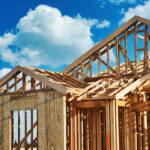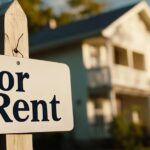This article originally appeared in the December 2024 edition of MortgagePoint magazine, online now.
The property preservation industry stands at a crossroads, shaped by shifting market dynamics, regulatory changes, and the uncertainty of a recent Presidential election. As mortgage delinquencies remain relatively low but economic uncertainties grow, property preservation companies are facing increasing pressure to maintain efficiency, ensure compliance, and adapt to the evolving needs of servicers and communities. At the heart of this transformation are the leaders of Five Star’s Property Preservation Executive Forum, a collective of industry veterans tasked with navigating these complex waters.
In exclusive interviews, executives representing several PPEF member companies share insights into the trends reshaping the field, from the growing role of technology in field services to the mounting labor and cost pressures that threaten profitability.
Kimberly Dawson, Director, Single-Family Real Estate Asset Management, Fannie Mae
 Q: What are the biggest challenges facing the property preservation space and how you do business? How are prop pres companies having to adapt to meet these challenges?
Q: What are the biggest challenges facing the property preservation space and how you do business? How are prop pres companies having to adapt to meet these challenges?
At Fannie Mae, we’ve found one of the biggest challenges to be increased dispersion of properties—properties have become less centralized, with increasing levels in rural areas. The average distance between properties is approximately 10 miles, requiring more travel time to properties. This dispersion poses logistical challenges and increases operational costs for our vendors.
The increased dispersion of properties, especially in rural areas, combined with trending labor shortages in the property preservation space, has created challenges in sourcing labor. This situation is exacerbated by the fact that smaller pools of suppliers are willing to undertake projects in these dispersed and rural areas, while there are limited sources of labor in some circumstances.
Q: How have market conditions, such as shifts in interest rates or the overall economy, impacted the property preservation landscape this year? What changes do you anticipate in 2025?
Fannie Mae is not anticipating a substantial shift in the property preservation landscape in 2025. However, the current challenges will likely continue. We frequently visit markets across the country to meet face-to-face with vendors and walk properties, gaining in-depth looks at the unique challenges they encounter daily. Fannie Mae promotes a collaborative environment for questions or concerns from our vendors. These engagements allow our vendors opportunities to openly discuss roadblocks and make suggestions to address specific challenges they may be having. Operational and material costs, especially those that are influenced by inflation or supply challenges, are important for Fannie Mae to acknowledge with our vendors when pricing discussions arise. It’s important that our pricing is reflective of current market conditions as well as sustainable for our vendors. To ensure pricing is commensurate with market rates, Fannie Mae monitors pricing on an ongoing basis using available benchmarks and market research, adjusting as necessary. As the market changes, we evolve our processes to ensure that we are responding appropriately.
Q: What primary new technologies or innovations are property preservation companies adopting to improve efficiency and service quality? How is AI impacting the sector?
In 2018, Fannie Mae launched its Pre-Foreclosure Property Preservation Program, offering mortgage servicers the opportunity for Fannie Mae to handle the management of inspection and preservation activities on delinquent loans secured by vacant properties. Our program utilizes a national network of vendors that help standardize the preservation of these properties in our portfolio. This initiative reduces complexity for servicers, creates savings for borrowers and servicers, and standardizes end-to-end property management. It also allows us and our vendors to benefit from lower costs through economies of scale.
Q: How are you adapting to the need to service more remote/rural properties, necessitating more “windshield time?”
We are exploring batching inspections. With this process, we expect vendors to be able to develop more efficient routes, reducing travel time and operational expenses. This not only saves time and costs but also contributes to reducing greenhouse gas emissions. We are currently seeking feedback from servicers and vendors about how to best support this process improvement.
Q: Are vendors maintaining sufficient workforce? How do they recruit and retain talent?
Vendors have shared that staffing has been challenging since the pandemic. They are maintaining a sufficient work force through consistent recruiting, hiring, and training. At Fannie Mae, we are committed to diversity in our supplier base. We welcome suppliers that share our goals of quality, consistency, and professionalism. Our need for new suppliers is always changing in response to volume, attrition, and other factors. Keep in mind that, during times of low REO inventory, we may not have a need for new suppliers. Interested vendors can take steps today toward becoming a supplier for Fannie Mae, even if we do not have an immediate need for suppliers in your area. Start by registering interest in our Procure One system, so that you may be considered for our future needs.
Q: What strategies are companies using to mitigate the risks of vandalism, theft, or squatting in vacant properties?
To address the risks of vandalism, theft, and squatting in vacant properties, Fannie Mae employs a multifaceted approach. One key strategy is to ensure frequent property visits by vendors.
Regular inspections help to identify and address any issues promptly, maintaining the security and integrity of the properties. Securing properties is another important step. This involves using special materials such as clearboarding and DAWGS (Door and Window Guard Systems), where permitted. DAWGS offers robust protection for doors and windows, further enhancing the security of vacant properties. Clearboarding provides a transparent yet secure barrier, allowing visibility while preventing unauthorized access.
Q: What are the keys to navigating local, state, and federal regulations impacting the property preservation industry?
One of the keys to navigating local, state, and federal regulations in the property preservation industry is leveraging the expertise of local vendors. These suppliers have a deep understanding of what’s normal and customary in their specific areas, which is invaluable for ensuring compliance.
By building strong relationships with local vendors, Fannie Mae can rely on their knowledge to guide us through the regulatory landscape.
Q: How is climate change impacting property preservation, particularly in regions prone to natural disasters?
At Fannie Mae, we recognize that climate impacts extend beyond immediate preservation activities and affect the long-term sustainability and resilience of our assets. We have several test-and-learn strategies in place that aim to enhance the sustainability and resilience of our properties, including providing
Fannie Mae REO buyers with additional information and resources around flood risk, increasing REO property resiliency through roofing improvements in high-risk areas, and leveraging energy-efficient and water-saving products when repairing REO homes.
Alan Jaffa, CEO, Safeguard Properties
 Q: What are the biggest challenges facing the property preservation space, and how is Safeguard Properties adapting to meet these challenges?
Q: What are the biggest challenges facing the property preservation space, and how is Safeguard Properties adapting to meet these challenges?
Safeguard Properties faces several challenges, including labor shortages, evolving compliance requirements, rising costs for materials and services, and fluctuations in mortgage and foreclosure rates. To adapt, Safeguard has invested in automation and workflow technologies to enhance service efficiency and ensure quality control, even as demands on preservation shift. By streamlining field operations and actively collaborating with investors and insurers to refine completion timelines and inspection requirements, Safeguard continues to drive operational efficiency while aligning closely with stakeholder expectations.
Q: How have market conditions, such as shifts in interest rates or the overall economy, impacted the property preservation landscape this year? What changes do you anticipate in 2025?
This year, rising interest rates have moderated the housing market, reducing foreclosure volume and impacting the demand for property preservation services. Safeguard Properties has responded by optimizing resources and adopting cost-saving technologies. In 2025, the company anticipates continued adjustments to meet evolving investor demands and further diversification of services to stabilize profitability in response to market uncertainty.
Q: What primary new technologies or innovations is Safeguard Properties adopting to improve efficiency and service quality? How is AI impacting the sector?
Safeguard Properties is increasingly leveraging AI to streamline operations, improve data analysis, and optimize inspections. AI-driven tools help prioritize work orders, process data more rapidly, and identify critical patterns in property status, ensuring that Safeguard can meet investor and insurer standards efficiently. Additionally, route optimization technology reduces travel demands and enhances overall productivity, allowing Safeguard to serve clients with heightened consistency and quality.
Q: How is Safeguard Properties adapting to the need to service more remote/rural properties, necessitating more “windshield time?”
Servicing remote areas is a priority at Safeguard Properties, which utilizes route-optimization tools and partners with local contractors to minimize extensive travel times. By recruiting professionals within these communities, Safeguard maintains its high service standards while addressing the unique logistical challenges that arise in rural areas. We have also worked with Investors and Insurers to review their specific requirements on inspection completion windows. Creating flexibility here will allow for denser routes and significantly help reduce windshield time.
Q: Is Safeguard Properties maintaining a sufficient workforce? How do you recruit and retain talent?
Retaining skilled contractors remains a focus for Safeguard Properties. The company supports recruitment through competitive compensation, flexible work schedules, and a commitment to ongoing training. To attract local talent, Safeguard targets recruitment efforts in high-need areas and provides a supportive structure through a mobile-enabled platform, ensuring seamless communication and coordination with contractors in the field.
Q: What strategies are Safeguard Properties using to mitigate the risks of vandalism, theft, or squatting in vacant properties?
Safeguard Properties proactively implements security measures, including regular inspections, remote monitoring, and collaboration with local stakeholders, to protect vacant properties. By engaging local communities and law enforcement and maintaining a consistent presence at properties, Safeguard reduces the likelihood of vandalism and enhances property security.
Q: What are the keys to navigating local, state, and federal regulations impacting the property preservation industry?
Safeguard Properties stays at the forefront of compliance by implementing advanced regulatory tracking systems, supported by a skilled legal team. Engaging with industry associations helps Safeguard maintain up-to-date knowledge and adapt swiftly to regulatory changes, ensuring compliance at federal, state, and local levels.
Q: What are the key compliance issues that property preservation companies need to focus on?
Compliance issues remain a central focus, including HUD and GSE guidelines, environmental handling protocols, and local property maintenance requirements. Safeguard is committed to embedding sustainable practices into its processes, with an eye on both regulatory and environmental standards.
Q: How is climate change impacting property preservation, particularly in regions prone to natural disasters?
Climate change has amplified the risk of natural disasters, particularly in hurricane-, flood-, and wildfire-prone regions. Safeguard Properties is prepared for these challenges through tailored response protocols and the use of resilient materials in repair work.
The company also provides specialized training to contractors for managing weather-related damage, emphasizing readiness and resilience across its operations.
Tony Maher, EVP of Business Development, Cyprexx Services, LLC
 Q: What are the biggest challenges facing the property preservation space and how you do business? How are companies having to adapt to meet these challenges?
Q: What are the biggest challenges facing the property preservation space and how you do business? How are companies having to adapt to meet these challenges?
The labor market is still tight for skilled talent in inspector/contractor networks. Inspection pricing increases have created positive movement in attracting qualified inspectors back to the industry. PP pricing continues to be relatively stagnant, so finding operating efficiencies is key. With lower overall volumes, it is not as profitable for some vendors to invest time and money in growing their mortgage field services businesses. Compounding the problem of stagnant pricing and lower volumes is less concentrated, more rural properties coupled with continued inflationary pricing. Additionally, we see many properties in relatively decent shape sell third-party, which leaves the more severely damaged properties moving through the HUD Conveyance or REO pipeline. No adjustments have been made to FHA guidelines/timelines for this aspect of the changing model. To manage the more difficult properties, we have increased headcount and oversight in the FHA space and are piloting several new initiatives to get more comprehensive evaluations for these rural, heavily damaged properties at FTV. This helps us avoid delays, expedite bids, and reduce liability. One additional concern we have is Investors and servicers looking to property preservation companies for reimbursement of loss, many times years after ICC or disposition without defining the issues. Pushing liability without specific identification of what issues were not managed properly by the PP vendors is not sustainable.
Q: How have market conditions, such as shifts in interest rates or the overall economy, impacted the property preservation landscape this year? What changes do you anticipate in 2025?
Inflation and rising wages have been significant challenges this year. Preservation pricing for most investors remains unchanged and outdated. When combined with lower volume, loss mitigation, and forbearance efforts, etc., some vendors have exited the industry since 2020. This has led to longer preservation timelines in select and rural areas due to reduced vendor coverage. If recent trends continue, the mortgage servicing industry will see further consolidation and acquisitions. This will lead to volume increases for preservation vendors working in those shops, which helps larger national preservation companies keep our networks engaged. One additional area we are watching is, if interest rates continue to decrease, what effects will that have on homebuilding and some migration of skilled labor to that market?
Q: What primary new technologies or innovations are property preservation companies adopting to improve efficiency and service quality? How is AI impacting this sector?
AI is being leveraged to help with QC and reading/interpreting legal documents, such as code violations. Our current view is there still needs to be a human component for most actions until machine learning becomes an “expert,” but the use is proliferating to reduce cost and increase speed of service delivery and quality. Outside of AI, there are other technologies we are tapping into to improve timelines, efficiency, and service quality in both the inspection and field services space that are in the pilot stage. At this time, Cyprexx is absorbing these costs to provide proof of concept, at which time we will engage the investors to seek approval for these services.
Another area where the industry has expanded efforts is new-and-improved technologies in cybersecurity. Like all industries, ours is under attack every day by malicious threat actors trying to disrupt business operations and potentially steal important information. As such, Cyprexx has invested heavily in new technology, personnel, processes, and security awareness training to mitigate that risk and protect our business.
Q: How are you adapting to the need to service more remote/rural properties, necessitating more “windshield time?”
A lack of property concentration outside of metro areas is negatively impacting inspection routing and preservation vendor coverage/timelines. We are working with the Five Star Property Preservation Executive Forum and the investors directly to change inspection guidelines and combat these challenges.
We are also layering our preservation network with more regionals to offset the loss of smaller vendors in rural areas, due to rising costs, insurance requirements, and lack of steady work.
Unfortunately, this drives preservation costs higher. In many cases, we are seeing an increase in trip charges from our vendors when traveling to rural properties, which further drives up costs.
Q: Are there challenges maintaining a sufficient workforce? How do you recruit and retain talent?
We carry more staff than required to manage volume fluctuations and the onboarding of new clients. While this prevents us from being short-staffed, there are still challenges with recruiting and retention due to rising wages and the widespread adoption of remote work that leads to more options for job seekers. Internal surveys showed employees ranked remote work second only to wages—ahead of other traditional benefits like PTO, bonuses, and health insurance. While we offer all of those, we know employee job satisfaction is paramount for retention, company culture, and our overall success.
We embraced remote work and use it to our advantage as a benefit to recruit and retain talent. Recruiting nationally for specific FHA roles has improved our recruiting and ability to retain highly skilled employees. In addition, having a national, remote workforce has improved our business continuity readiness, mitigating risks caused by regional natural disasters.
Q: What strategies are companies using to mitigate the risks of vandalism, theft, or squatting in vacant properties?
This has always been a challenge in the preservation industry, but we have seen an uptick in the occurrence of these issues due to the conditions and locations of properties currently flowing through inventory. We find the best approach is timely and consistent recurring services coupled with layers of QC across both our inspection and preservation teams. This helps us identify and flag these high-risk properties as soon as we get eyes on them, and continuous monitoring throughout the property lifecycle. Often, we install DAWGS or exterior fencing (on select properties), but we have also gone as far as contracting with 24/7 security companies to prevent unlawful entry and vandalism. Moving quickly with our clients to determine the best course of action for each property via the options available, across both the preservation and servicing sides, is also helpful.
Q: What are the keys to navigating local, state, and federal regulations impacting the property preservation industry?
Timely and consistent monitoring, tracking, documentation, and implementation are all keys to remaining in compliance with changing regulations impacting the preservation industry. We have a dedicated department, independent of operations, that is responsible for this function. They monitor AllRegs and other reliable sources to stay abreast of these changes and ensure compliance within our company. We also enlist the help of our in-house attorney and local attorneys as required to make sure we understand the new requirements and operate within them.
Q: What are the key compliance issues that property preservation companies need to focus on?
In property preservation, you must stay especially focused on the local regulations that vary by municipality and county, and particularly in areas where we do not see regular volume it is easy for a new coordinator to overlook, or be unaware of, a new or existing law. To reduce human error in these situations, we have enhanced our system of record with flags and links to the requirements and internal SOPs applicable to properties in those areas. This makes it much harder for coordinators to overlook key compliance issues that pertain to these smaller geographic areas.
Q: How is climate change impacting property preservation, particularly in regions prone to natural disasters?
Higher insurance premiums and loss of coverage in the United States could increase defaults. Both climate change and normal weather cycles impact property preservation throughout the year, and certain areas are more prone than others when it comes to weather events like hurricanes, tornados, wildfires, blizzards, e year was impacted significantly by Hurricanes Helene and Milton due to the strengths and paths of these storms.
High ocean temperatures in recent years have resulted in explosive strengthening of these storms over short periods of time. This, combined with multiple-day path uncertainty, makes it more difficult to prepare for these storms proactively.
As a preservation company headquartered in Tampa, we prepare thoroughly at the beginning of each hurricane season and have taken many steps over the years from a business continuity perspective to ensure operations continue running smoothly before, during and after a storm. This includes a standby generator that powers our main office, redundant internet providers, a fully functional alternative DR site for our technology and systems, and the issuance of laptops to all users to allow the continuance of remote work regardless of evacuations or post storm damage in the area.
Denia Ray, SVP of National Field Services, ZVN Properties Inc.
 Q: What are the biggest challenges facing the property preservation space and how you do business? How are prop pres companies having to adapt to meet these challenges?
Q: What are the biggest challenges facing the property preservation space and how you do business? How are prop pres companies having to adapt to meet these challenges?
The most significant challenges facing our industry right now include the reduction in qualified property preservation companies, driven by the significant reduction in volumes and inadequate pricing, as well as scattered disburse portfolios, many of which are in rural areas.
Our industry has been forgotten by FHA in terms of periodic pricing reviews and increases, to keep current with labor and expenses. FHA has had no measurable increase in property preservation fees in the past 20 years, which is relevant to the existing challenges as they have 55.67% of the seriously delinquent loans, with a default rate of 11.7%, per October’s Housing Market Indicators Monthly Update Report.
The preservation industry has had to adapt by diversifying service offerings outside of traditional default, with many, including ZVN, pivoting into the Single-Family Rental repair and maintenance sector. Additionally, ongoing and locally focused recruitment is constant. (Reference: Housing Market Indicators Monthly Update October 2024)
Q: How have market conditions, such as shifts in interest rates or the overall economy, impacted the property preservation landscape this year? What changes do you anticipate in 2025?
This year continues to be impacted by a shortage of housing supply, which is driving the success of the Claims Without Conveyance of Title (CWCOT) and Second Chance auction sales. Many markets are still appreciating, creating ideal investment opportunities for investors via auction. While this is good for the overall economy in terms of real estate investments, it has negatively impacted the property preservation business with continual reductions in volume. What doesn’t sell at auction is often in such a state of disrepair that getting the property into HUD’s “Conveyance Condition” is challenging.
Many of these assets have reached the end of their economic life. This causes increased financial risk for the preservation industry, as if we miss a timeline, or a material item, HUD considers it Mortgagee Neglect and, in order to convey, preservation vendors often have to do repairs and improvements at our own expense. One miss can easily cost us tens of thousands of dollars.
Looking into 2025, we are cautiously optimistic that HUD will start following Fannie Mae’s property preservation pricing. The GSEs review and adjust regularly, which would put the industry in a better financial footing, helping to secure the long-term survivability of our essential industry that helps stabilize communities and reduce blight, one house at a time.
Q: What primary new technologies or innovations are property preservation companies adopting to improve efficiency and service quality? How is AI impacting the sector?
The industry continues to evolve and challenge the status quo by looking to reduce costs and gain efficiency in every step of the process. Some of the tools we are currently leveraging include predictive analysis for storm tracking to be proactive in securing assets prior to a major event. We are then able to quickly prioritize disaster inspections based on asset level risk reporting and deploy our Disaster Response Teams. Proactively managing these events allows us to book rooms and secure car rentals before the demand increases and availability ceases. This solution also allows us to push snow removal orders in the field, with the factual snowfall amounts, while looking at temperature highs in the next 24 hours. This significantly reduces trip fees when a vendor is dispatched only to find that the snow has melted.
Artificial Intelligence has become “front and center” in successful property preservation company’s playbooks. ZVN leverages technology that first gained recognition in the insurance space. We are able to take large repair and renovation scopes that used to take hours, down to minutes. The photo-recognizable technology is trained for our various clients to recognize deficiencies that our clients would want corrected and then provides a punch list of items that need to be bid.
Our next phase is teaching AI to define scope and create the bids based on industry-recognized cost estimators. AI is more precise than a human in ensuring we do not miss anything. This also works for property condition reports and varying “conveyance condition” punch lists.
Q: What are the keys to navigating local, state, and federal regulations impacting the property preservation industry?
This continues to be a moving target. Staying abreast and having good matrixes and legal database reference providers is the only way to stay ahead of the curve and reduce your legal risk. There are numerous options available, but all come at a significant cost. The best solutions let you know about proposed laws before they are enacted, so you can proactively update standard operating procedures and get the updates out to the field, which is our first line of defense. We also listen to our local partners, who often know their own jurisdictional requirements better than we do. Swimming pool securing is a good example. It varies from municipality to municipality.
Q: What are the key compliance issues that property preservation companies need to focus on?
One of the highest risks is ensuring we don’t treat our vendor partners like employees. Having good processes and procedures internally, with a team who understands this risk, and constant internal training, is essential to minimizing this risk. There are still ongoing class action lawsuits within our industry on this topic.
Code violation management is another area that requires the utmost of compliance and sometimes client education, to ensure we can work with the Code Officer to abate safety and health issues, as well as keeping the property maintained in such a way that it doesn’t cause neighborhood blight. Fees for failing to manage this properly can be up to $1,000 per day.
Q: How is climate change impacting property preservation, particularly in regions prone to natural disasters?
The industry has to be ready for anything! The United States has had our fair share of natural disasters this year. The Pacific Northwest is on target for a “first of its kind” weather event that is deemed to be similar to a hurricane. Being successful in the industry requires a dedicated team with project managers and a playbook on how to implement, deploy, and execute a strong disaster response in all parts of the country. Being ready, and constantly monitoring your playbook and team, is mandatory.
Anthony Scotese, First VP, Production Operations, ServiceLink
 Q: What are the biggest challenges facing the property preservation space and how you do business?
Q: What are the biggest challenges facing the property preservation space and how you do business?
The biggest challenges facing property preservation and how we do business include the impact the long-term inflationary market has on the cost of goods, along with increased insurance expenses and declining default volumes year-over-year for the last decade. Asset density has plummeted and allowables (rates) to complete preservation work have not increased significantly enough to meet this shift. Turnaround times also have not been adjusted for the significantly lower volumes. This has caused a lot of preservation contractors to leave the industry or rely more heavily on other lines of business to stay profitable.
Q: How are prop pres companies having to adapt to meet these challenges?
We have partnered with industry trade groups to sponsor pricing increases across the entire industry and have been able to drive two allowable increases in the last 24 months. We’re continuing to partner with these groups to sponsor pricing increases for additional services.
We’re hopeful this will yield some relief in the near future. Where allowables have been increased, we partner with our network to share in the increases to ease the burden of rising costs of material, technology and insurance.
Q: How have market conditions, such as shifts in interest rates or the overall economy, impacted the property preservation landscape this year?
In general, the preservation industry as a whole has continued to see declining default volumes based more on the increase in loan workout options that expanded the waterfall during and since the COVID-19 pandemic. Higher interest rates and a sputtering economy have not impacted volumes for preservation but have caused significant stagnation in the housing market as a whole.
Q: What primary new technologies or innovations are property preservation companies adopting to improve efficiency and service quality? How is AI impacting the sector?
The use of image recognition and intelligent document processing has started to take off in the preservation space and is a trend I’ve been tracking closely. The anticipated impact of this technology is that it will allow for better identification of risk factors and real-time quality control that is far beyond the breadth of what can be accomplished with manual reviews.
Q: How are you adapting to the need to service more remote/rural properties, necessitating more “windshield time?”
Through aggressive recruiting and the targeting of key municipalities that minimize the windshield time associated with low-volume density in rural areas, ServiceLink has grown its network by 30% and reduced windshield time by over 50% while utilizing local contractors to perform preservation services in difficult-to-manage areas.
Q: What are the keys to navigating local, state, and federal regulations impacting the property preservation industry?
In ServiceLink’s Field Services division, we have a dedicated regulatory oversight team with decades of combined industry experience who monitor changing regulations at the local, state, and federal levels, including legislation and court cases that are in progress. This helps us stay on top of where the industry is heading from a compliance standpoint and allows us to prepare and swiftly address changes to keep our client partners in compliance.
Q: How is climate change impacting property preservation, particularly in regions prone to natural disasters?
Natural disasters are happening more frequently. We’ve seen it this year with Hurricane Beryl being the earliest Category 5 hurricane in the Atlantic Basin’s history. We’ve seen it with the large-scale devastation brought from Hurricanes Helene and Milton. Lenders and servicers alike need to be prepared, and this means partnering with the right property preservation provider who will meet your individual needs.
It’s important for us to have a national presence with response teams that can travel across state lines, if needed, to ensure our clients receive prompt action, including disaster inspections and work toward remediation.






